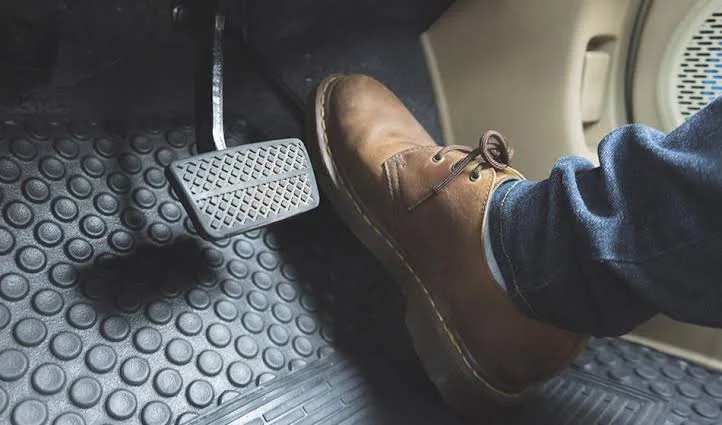Fuel pump issues account for 12% of roadside assistance calls, according to AAA's latest data. Meanwhile, 15% of all automotive breakdowns stem from fuel system problems that leave drivers stranded at the worst possible moments.
"The engine revs, but I'm not going anywhere!" That's the frustrated cry I hear almost daily from drivers whose cars suddenly lose their ability to accelerate properly.
The Most Common Acceleration Killers
Transmission Slipping Problems
When your RPMs climb but your speed doesn't match, you're experiencing transmission slippage. This mechanical nightmare costs drivers between $2,000 - $7,100 for complete replacement, making it one of the most expensive automotive failures.
Automatic transmissions contain hundreds of internal components working under extreme pressure and heat. When clutch bands or torque converters fail, engine power can't transfer to the wheels effectively. You'll hear the engine rev enthusiastically while the speedometer barely moves.
Manual transmissions face clutch problems that create similar symptoms. A worn clutch disc slips against the flywheel, preventing power transfer to the transmission input shaft.
Fuel Delivery Failures
Your engine needs adequate fuel pressure to accelerate properly. Weak fuel pumps create lean conditions that starve the engine during high demand situations like highway merging or hill climbing.
Fuel pumps typically last 100,000 - 150,000 miles before failure. When they start failing, you'll notice hesitation during acceleration, especially under load. The engine may run fine at idle but struggle when you demand more power.
Clogged fuel filters compound pump problems by restricting flow. A $15 filter replacement can prevent a $800 pump replacement, yet many drivers ignore this basic maintenance until catastrophic failure occurs.
Mass Air Flow Sensor Issues
The Mass Air Flow (MAF) sensor measures incoming air and tells the engine computer how much fuel to inject. A contaminated or failed MAF sensor sends incorrect data, creating rich or lean conditions that kill acceleration.
Replacement costs range from $250 - $600, but many drivers attempt cleaning first. MAF sensor cleaner costs $8 - 12 and often restores proper function without expensive replacement.
"I cleaned it with brake cleaner and it works fine now." This common mistake destroys delicate sensor elements that require specialized cleaning solutions.
Engine Breathing Problems
Catalytic Converter Blockages
A clogged catalytic converter creates backpressure that chokes engine performance. Exhaust gases can't escape efficiently, reducing power output and causing sluggish acceleration.
Replacement costs vary dramatically, from $400 for aftermarket units to $2,500 for OEM converters on luxury vehicles. The precious metals inside these devices make them expensive targets for thieves and costly to replace.
Air Filter Restrictions
A severely dirty air filter restricts airflow like breathing through a straw. The engine can't ingest enough air for proper combustion, resulting in poor acceleration and reduced fuel economy.
Air filter replacement costs $15 - 40 and takes five minutes in most vehicles. Yet AAA data shows that one-third of drivers skip or delay basic maintenance like filter changes.
Electronic System Failures
Throttle Position Sensor Problems
Modern engines use electronic throttle control instead of mechanical cables. The Throttle Position Sensor (TPS) tells the computer how much power you're requesting. A failed TPS creates erratic acceleration or complete loss of throttle response.
Some vehicles enter "limp mode" when the TPS fails, limiting speed to 35-40 mph to prevent damage. This safety feature protects the engine but leaves drivers stranded on highways.
Oxygen Sensor Deterioration
Oxygen sensors monitor exhaust gases and adjust fuel delivery accordingly. Failed O2 sensors cause rich or lean conditions that reduce power and increase emissions.
These sensors typically last 60,000 - 100,000 miles before replacement. Warning signs include poor fuel economy, rough idle, and failed emissions tests before acceleration problems become noticeable.
Diagnostic Steps
Basic Troubleshooting
Start by observing when acceleration problems occur. Does it happen during cold starts, only under load, or all the time? These patterns help narrow down potential causes.
Check engine lights provide valuable diagnostic information. Generic code readers cost $20 - 50 and identify problem areas quickly. Professional-grade scanners reveal live data that pinpoints exact failures.
Professional Testing
Fuel pressure tests reveal pump and filter problems immediately. Most shops charge $100 - 150 for comprehensive fuel system diagnosis that can save thousands in misdiagnosis.
Transmission shops perform road tests and internal pressure checks to identify slipping components. Early detection allows for targeted repairs instead of complete rebuilds.
Prevention and Early Warning Signs
Maintenance That Matters
Regular fuel filter replacement prevents pump failures and maintains proper pressure. This $30 service every 30,000 miles protects an $800 pump investment.
Transmission fluid changes extend component life significantly. Fresh fluid contains additives that condition seals and reduce friction. Many transmission failures result from neglected fluid that becomes acidic and corrosive.
Warning Signs to Watch
Hesitation during acceleration often precedes complete failure. Address these symptoms immediately rather than hoping they'll disappear. "It comes and goes, so it's probably fine." This thinking guarantees expensive repairs later.
Poor fuel economy indicates engine efficiency problems that worsen over time. A sudden 15 - 20% drop in mileage signals immediate attention needed.
Acceleration problems don't fix themselves, they progress from minor inconveniences to major breakdowns that leave you stranded at the worst possible times. Early diagnosis and repair cost hundreds instead of thousands.
"I'll drive it until it completely dies." This strategy guarantees maximum repair costs and potential safety hazards during failure.
Professional diagnosis costs $100 - 200 but identifies problems before they become emergencies. Smart drivers invest in early detection rather than reactive repairs after catastrophic failure.
Your car's acceleration system involves complex interactions between fuel delivery, air intake, ignition, and transmission components. Understanding these relationships helps you communicate effectively with repair professionals and make informed decisions about maintenance timing.

Comments (0)
Please login to join the discussion
Be the first to comment on this article!
Share your thoughts and start the discussion